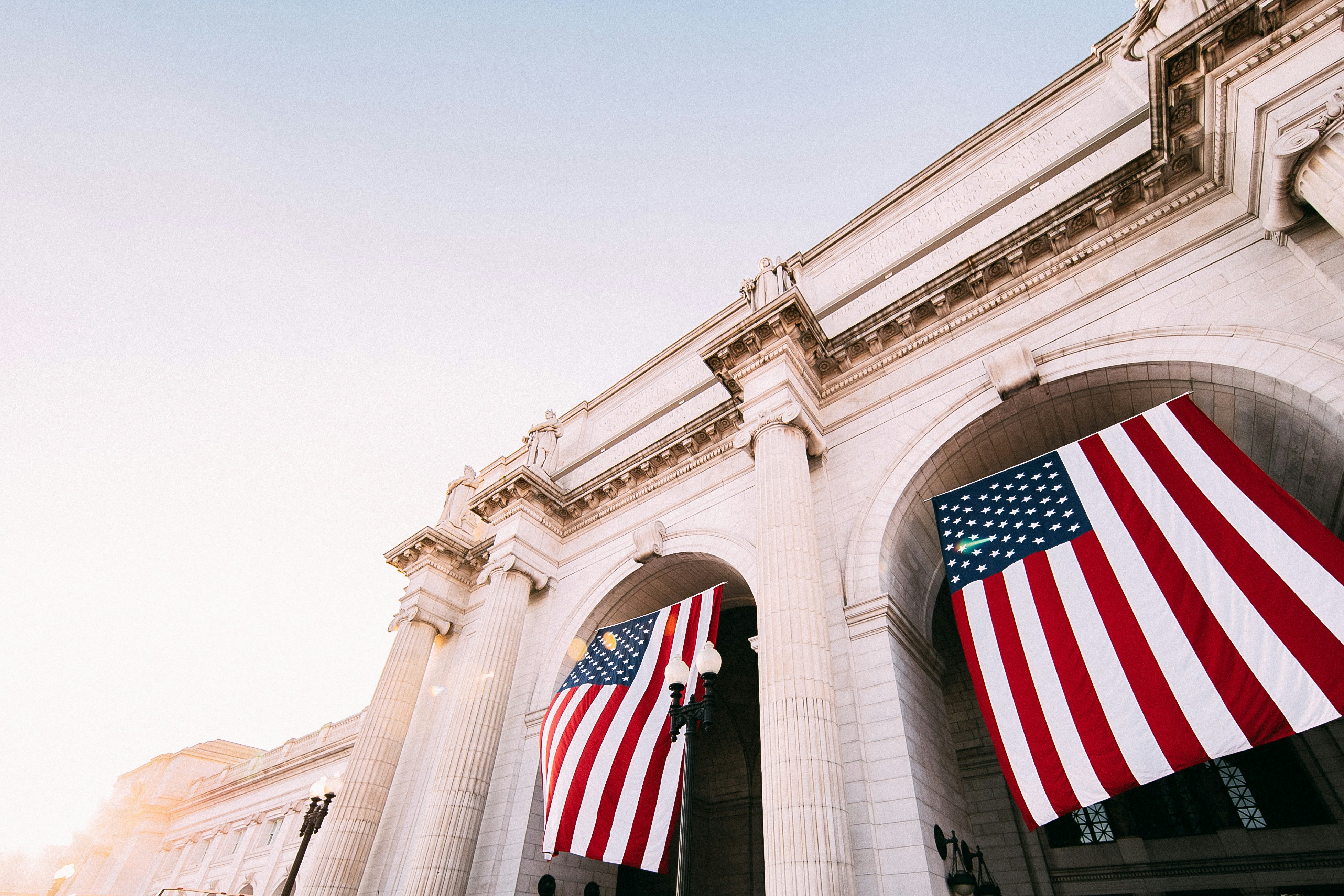The US Report 2025
A snapshot of industry investment trends in the world's largest economy
The US is the largest recipient of foreign direct investment (FDI) across multiple sectors. This is highlighted in the US Report 2025, a sector-by-sector snapshot of FDI in the US.
Automotive OEM investment is concentrated across the auto belt. The top 3 states – South Carolina, Georgia and Alabama – for FDI in the sector are all located in the south.
Arizona and Texas are the two undisputed winners of recent FDI into semiconductors in the US. This is due to respective plans by Taiwan's TSMC and South Korea's Samsung to build major chipmaking fabs.
Meanwhile, FDI in the financial services sector is spread across top financial hubs in states such as California, New York and Florida.
Introduction

The US is the undisputed world leader in attracting foreign direct investment. In spite of changing administrations in the White House with different policies and approaches to FDI promotion, multinationals consistently want a piece of the American pie.
The US has for 13 years topped consultancy Kearney’s FDI confidence index, an annual survey of senior executives at companies with annual revenues of $500m or more. Undoubtedly, investors are drawn to the large US consumer market, its abundant natural resources and expanding economy, which in 2023 and 2024 grew more in real terms than all its G7 peers. Recent US federal policies – from tax reforms to subsidies and infrastructure development – have also set the foundations for companies to expand and seek growth opportunities.
Relatively higher US operating costs for certain sectors compared to other competing countries is a price worth paying for many investors. A pro-business culture, networks of innovation ecosystems and pools of world-leading talent make the US too good an opportunity for many multinationals to overlook. Rising geopolitical tensions, new corporate strategies since Covid-19, and bottlenecks in talent and sites have, so far, not dampened foreign investors’ US plans.
Data on greenfield FDI project announcements, both by number and value, backs up this bullishness. The fDi US report 2025 explores these dynamics across 20 leading industries for FDI into the US between 2017 and 2024, taking into account both Donald Trump’s first term and Joe Biden’s stint in the Oval Office.
Federal policies, including Trump’s 2017 tax reforms and subsidies under Biden’s industrial policies, have favoured more investment in the US. This forms part of its bid to build out domestic capacity in strategic infrastructure and industrial capacity to support the creation of more American jobs. During the second Trump administration, under its America First Trade Policy and mantra of “economic security is national security”, both foreign and US companies are being encouraged to prioritise the US for their capital spending. This US fDi report provides crucial insights on recent sectoral FDI trends across the world’s largest economy.
Greenfield FDI performance by sector, 2003-2024
Navigate to one of 20 leading sectors by clicking icons in the grid below. These sectors are coloured and grouped into the following five broad industry categories:
Manufacturing & Industrial Production
|
|
|
|
|
|
|
|
|
|
|
|
|
|
|
|
|
|
|
|
|
|
|
|
Consumer & Services Industries
Consumer products

US interstate investors dominate greenfield capital commitments in consumer products, led by e-commerce giant Amazon. FDI in the sector peaked in 2022 at about $3.6bn, but has remained at elevated volumes of more than $2bn since then. States with large populations and major metro areas capture the largest share, such as New York, Florida and California. The largest single project of recent years was Danish toymaker Lego’s $1bn plans to build a factory in the Greater Richmond area, Virginia. Investors from Europe and Asia are the most active in a bid to gain access to the US consumer market.
Financial services

Major US financial institutions are larger investors in their home market than their foreign competitors. FDI in financial services has been relatively stable compared with other sectors in the past eight years. But 2024 was still a markedly low year for projects and capex. Large banks from Canada, Europe and Asia dominate the list of investors from abroad. Foreign investors in the sector are less likely to be given incentives than in other industries. Most FDI in the sector is concentrated in major financial centres like New York City, Miami, Charlotte, Chicago and Dallas.
Real estate

Since 2017, real estate attracted the second most combined capital commitments from overseas and domestic investors across all sectors. Record FDI in 2024 was mainly from major residential building projects, such as Canada’s Mattamy Homes’ plans to build new homes in Arizona, Florida, North Carolina and Texas. Industrial construction projects included a $400m investment into a new cargo facility at Miami’s International Airport. Domestic inter-state investors are more active than foreign investors across the real estate industry.
Transportation & warehousing

FDI projects in the transportation & warehousing sector spiked to a record high in 2023, declining the next year to the second highest level on record. Danish logistics giant AP Moller-Maerk’s planned $500m container terminal in Louisiana was the largest single FDI project since 2017. Over that same period, US inter-state investors have committed more than three times the capital in the industry than foreign companies. FDI hot spots for the sector are found across the US, including southern state Texas, Illinois in the Midwest and California on the west coast.
Energy & Natural Resources
Coal, oil & gas

About three times more capital has been committed to US fossil fuel projects by domestic inter-state investors than foreign companies since 2017. The Covid-19 pandemic and regulations favouring clean energy projects have weighed on FDI into coal, oil and gas in recent years. Major projects have still been recorded, such as QatarEnergy’s Golden Pass LNG export project in Texas, the US’s largest fossil fuel producing state. Other notable hotspots for large fossil fuel plans include West Virginia, Alaska, Ohio and Louisiana. Average capital expenditure per project is among the highest of all sectors.
Metals

FDI projects in the US metals sector climbed to elevated levels in 2023 and 2024. States like Tennessee, Michigan and Ohio have all attracted large critical minerals projects in recent years as the US has rolled out support to develop domestic capacity. Alabama is the biggest hotspot due to multiple large aluminium and steel projects. US interstate and FDI investors have committed very similar levels of capital in the metals industry since 2017. The sector has benefited from federal efforts to develop new domestic supply chains, from mines to processing and manufacturing.
Renewable energy

The US renewable energy sector has magnetised growing FDI commitments, helped by subsidies supporting the energy transition. The most active foreign investors are from Europe and Canada. Domestic US interstate investors pledged about the same as their overseas counterparts. Solar electric power projects have secured the lion’s share of FDI capital expenditure, with a concentration across the US Sun Belt in states like Texas, California and Nevada. More emerging clean energy technologies in the US like wind, biomass and green hydrogen also drew greater attention in 2024.
Healthcare & Life Sciences
Biotechnology

FDI across the US biotech sector more than doubled in 2024 compared with a year earlier. It was the second highest capex figure ever recorded after 2021. Multinational biotech companies from Europe and Asia have expanded their research, development and manufacturing capabilities in the US, the world’s largest biotech market. The largest single project was Japanese group Fujifilm’s plans to invest a further $1.2bn in its planned factory in North Carolina. Large US coastal hubs like California and Massachusetts are the FDI hotspots for the industry.
Medical devices

The medical devices industry recorded its highest ever FDI project numbers and capex in 2024. Several major western European and Asian companies have recently expanded their manufacturing capabilities in the US, the world’s largest medical device market. Japan’s Nipro was behind the largest project of 2024, with its plans to invest almost $400m to open a new factory in North Carolina. US inter-state companies remain more active investors than their overseas counterparts. The medical devices industry attracts far less FDI compared with other sectors in the US.
Pharmaceuticals

FDI in the pharmaceuticals sector broke all records in 2024. The spike was due to Danish drugmaker Novo Nordisk’s plans to expand its manufacturing capacity for its injectable obesity drugs in North Carolina. The $4.1bn planned investment was larger than any single pharma FDI project ever tracked. Other hot states for pharma FDI since 2017 have been Massachusetts, Pennsylvania and Ohio. Domestic and foreign investors have pledged similar levels of capital over the same period. The US continues to be the world leader in prescriptions drug spending per capita
Manufacturing & Industrial Production
Aerospace

FDI projects in the aerospace sector have ticked upwards in recent years. The bulk of these investments have been into manufacturing, maintenance and servicing operations. Western European firms are behind the vast majority of the capital spending. This includes France-based Aura-Aero’s plans to invest $172.5m into a new hybrid-electric aircraft factory in Florida, which was the largest project of 2024. US inter-state investors are still more active than foreign firms in the aerospace industry. Aerospace FDI receives fewer incentive deals than other manufacturing sectors.
Automotive OEM

FDI by automotive OEMs peaked in 2022 during the subsidy-fuelled rush to build new capacity for electric vehicles (EVs). Weak EV sales have led the industry to pull back from this transition and the investments necessary to achieve revised targets. Automotive is one of just a few sectors where FDI is higher than US inter-state commitments. Southern states have attracted the lion’s share of FDI since 2017, alongside more moderate FDI in traditional auto hubs in the Midwest. FDI in automotive OEM tends to receive larger incentives to cover capital spending than other sectors.
Chemicals

In each of the past two years, FDI in the chemicals industry rose to more than $6bn following a lull during the Covid-19 pandemic. States with established petrochemical clusters attract the largest capital commitments, such as Texas, Louisiana and California. Chemicals is one of a few sectors where foreign investors are more active than their US interstate counterparts. Chemicals FDI receive about 6% of US incentive deals, a sign of government support to help create jobs in this capital-intensive industry. FDI chemicals projects have ticked upwards since 2020.
Food & beverages

FDI in the food & beverages industry rose in 2024, but this was still lower than the highs recorded during Covid-19 in 2020 and 2021. Three quarters of capital expenditure has been in manufacturing operations since 2017. The largest single foreign investor has been Swiss consumer goods giant Nestlé, which has rapidly expanded its US pet food production capacity. Other major foreign investors have come from Asia, Europe and North America. FDI in the industry captures a relatively high number of US incentive deals. US inter-state investors are still more active than overseas companies.
Industrial equipment

FDI into industrial equipment has surged in recent years. More than $4.2bn was committed by foreign firms in both 2023 and 2024, driven largely by major plans to build new factories. These plans are to produce equipment and systems used in various activities, from power transmission to cooling, monitoring, agriculture and mining. Most of the large FDI source countries are in Europe. Since 2017, the sector has accounted for 9% of the US’s total FDI projects. Business-friendly states in the Midwest and South have been the main beneficiaries of this activity.
Technology & Innovation
Communications

FDI in the communications industry has boomed in recent years. The primary driver of this is the rush to build data centres across the US for traditional applications like cloud computing, but also, increasingly, artificial intelligence. Far more domestic capital is deployed into data centres due to the predominance of US hyperscalers like Amazon, Microsoft, Google and Meta. Digital infrastructure providers from across the globe, including Asia and Europe, have expanded their US presence. The communications sector received about 4% of total US incentive deals between 2017 and 2024.
Electronic components

The US electronic components sector is dominated by FDI. This surged between 2021 and 2023 due to plans to build battery factories, especially across the automotive belt from southern states like the Carolinas up to the Midwest. Slower-than-expected demand for electric vehicles led automakers and their battery partners to moderate expansions in 2024. East Asian industry leaders remain the largest sources of capital, followed by European competitors. Incentives in the sector are way above average, with states shelling out massive support programmes to secure these strategic supply chains.
Semiconductors

FDI into US semiconductors surged to an all-time high in 2024 as federal funding was approved for large planned factories. Semiconductor projects receive, on average, by far the largest subsidies of any industry. The single largest foreign investor, Taiwan’s TSMC, will receive up to $6.6bn of direct funding for its plans to build three fabs in Arizona. Other major investors with federal backing include South Korea’s Samsung Group, US domestic chipmaker Intel and GlobalWafers, a semiconductor company owned by the UAE’s sovereign wealth fund Mubadala.
Software & IT services

Software & IT services attract by far the most FDI projects of any industry. Project numbers have declined from a high in 2022, reflecting a decline in funding for tech companies in the public and private markets. Traditional tech hubs on the US west and east coasts attract the lion’s share of FDI. But FDI in the high volume, low-capex sector has flowed to almost every US state and territory since 2017. Over the same period, US inter-state firms were more active investors in the tech sector than foreign companies. Incentives, on average, cover a fifth of tech FDI capital spending.
Space & defence

The space and defence industry has historically attracted a relatively small share of US FDI. It has been dominated by large domestic defence contractors and space companies. While still a small share of overall US inward investment, a notable shift occurred in 2024 with the highest ever FDI projects and capex committed by overseas firms. This is partially a reflection of new demand for weapons and ammunition created by ongoing global conflicts. The US’s established research and financing ecosystem for the new space economy has also attracted foreign firms.






















